“Dare to dream” are the three words discreetly written on Bawah Reserve’s website homepage, but they jumped out at me. It’s a big statement and also an overused platitude of our times. But Bawah Reserve, that dreamy paradise that has garnered rave reviews since its launch in early 2018, is truly an ecological dream come true. Its raw beauty and understated luxury, from the way its built to the way it operates, is stealth wealth at its most ecologically sensitive.
Sustainability, the buzzword of our generation, has become a rather loose claim in the hospitality industry. Greenwashing is the new black, but few actually walk the talk, especially in the luxury hospitality sector, where meeting stringent guest demands and keeping in sync with nature can be a daunting feat. So it takes a special kind of property owner to see through a project to convert a lush island into an eco-functional resort.
- THE PROVENANCE
- SHAPING THE DREAM
- ECO-TECHNIQUES AND CHALLENGES
- SUSTAINING THE FUTURE
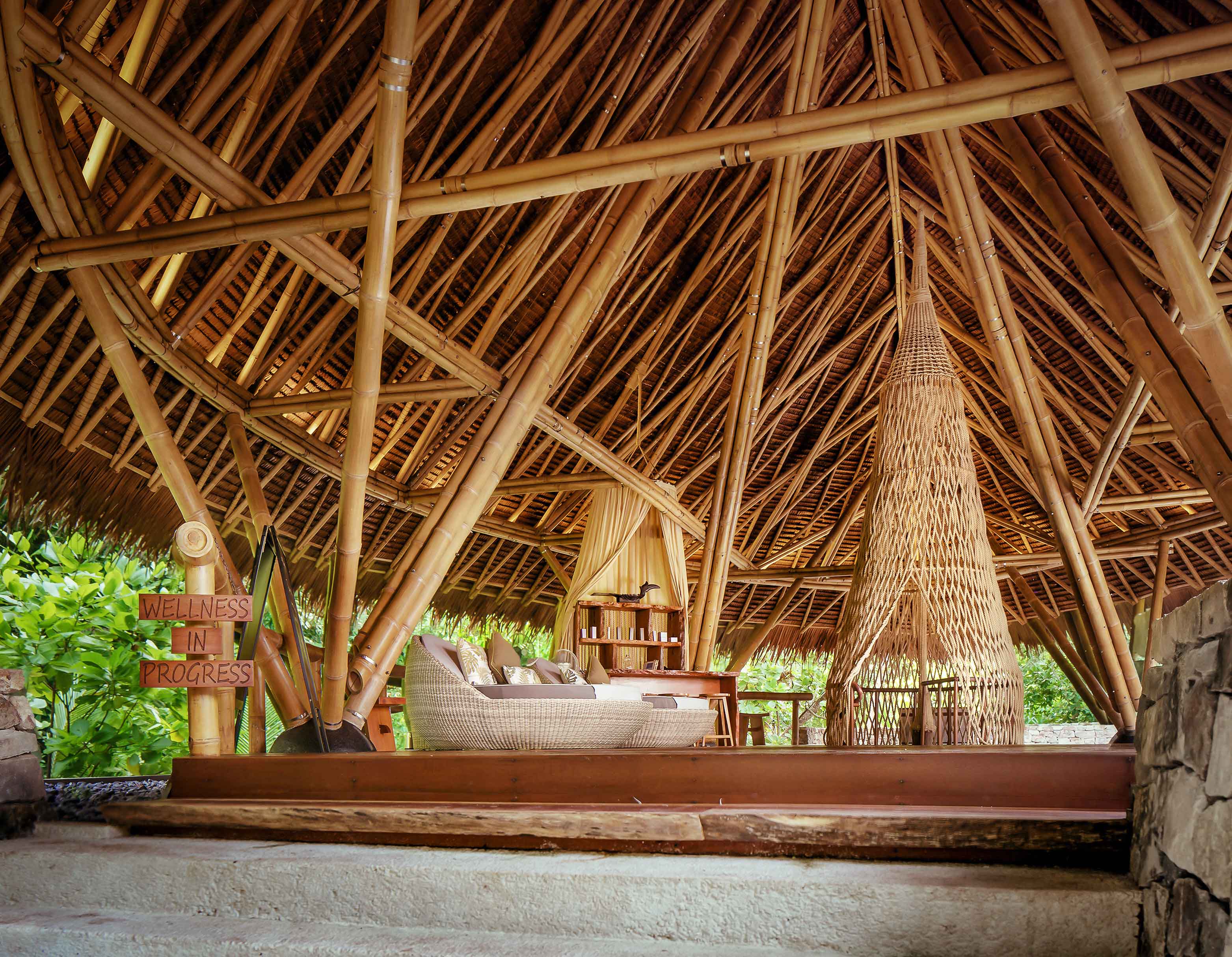
The story of Bawah Reserve began 10 years ago when Singapore-based Mr. Tim Hartnoll, the owner of a shipping firm, went sailing in Indonesia’s remote Anambas area with a skipper and discovered Pulau Bawah. He was so enchanted that his day trip became a three-day exploration of the six islands.
“The area is unique because the cluster of six islands have barrier reefs surrounding them, so they’re completely sheltered regardless of weather conditions,” says Mr. Hartnoll. “I fell in love with the seclusion and how it felt like a great big playground for marine lovers. You can dive on different sides of the reefs or go into the lagoons. Its untouched beauty makes you want to conserve it.”
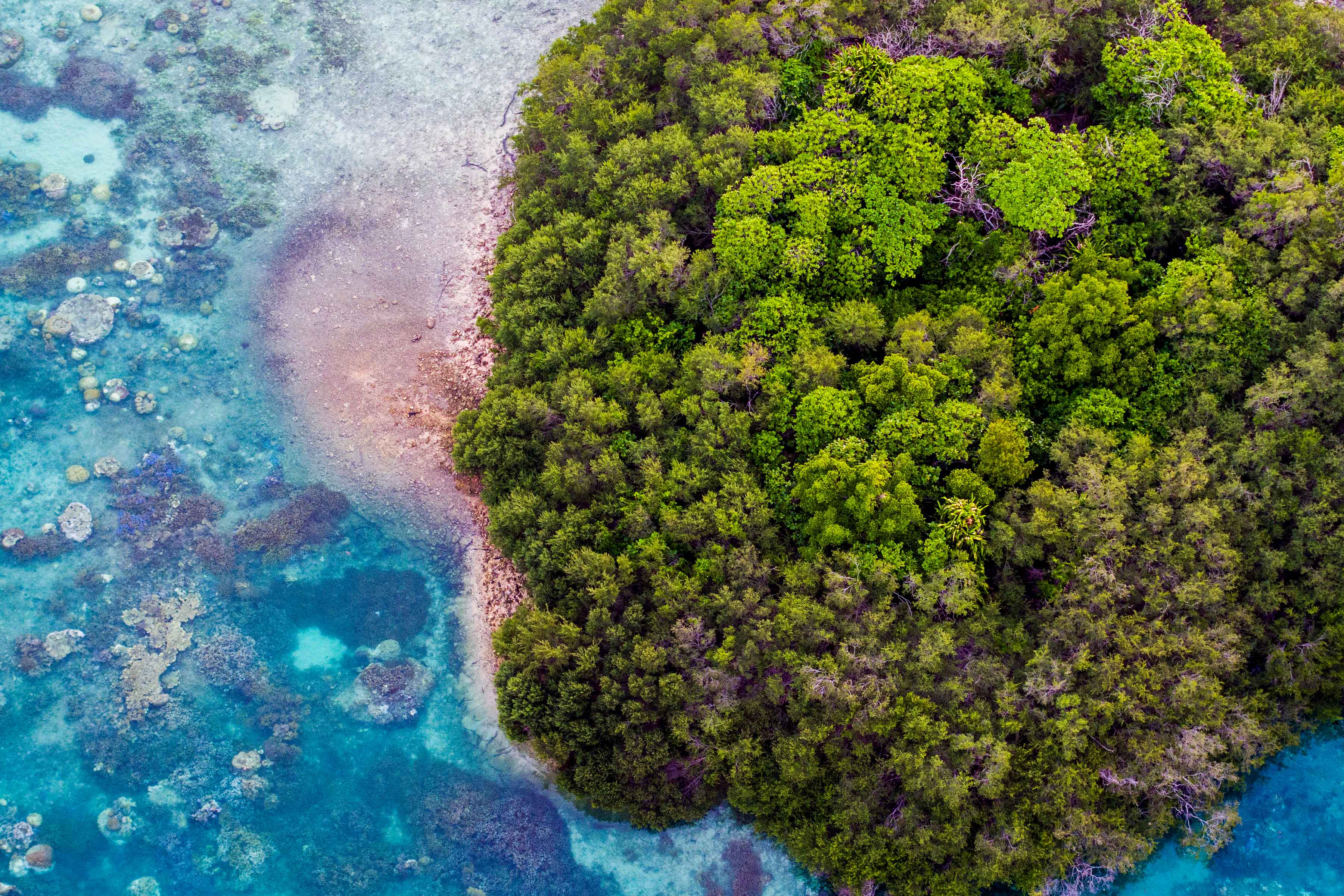
When an opportunity came up to buy the islands, Mr. Hartnoll took it and embarked on his first hospitality project with like-minded partners. One of his motives was to save the area from illegal dynamite fishing, which leads to the destruction of coral and eventually marine ecology.
The area has since become a conservation site. One island, Bawah, was designated for the resort.
A friend advised him to find a good architect who specialized in hospitality projects and after meeting with a few firms, Mr. Hartnoll found a building mate in Mr. Sim Boon Yang, the co-founder of esteemed Singapore-based firm Eco-Id. “For any project, a good relationship between owner and architect will usually result in a successful outcome,” says Mr. Sim.
“However, when an opportunity arises where both parties share similar interests and are of like minds, things are taken to the next level. We set out with a narrative that the island is so beautiful and pristine that you feel like its first discoverer upon arrival, and you’re about to go on an amazing nature expedition.”
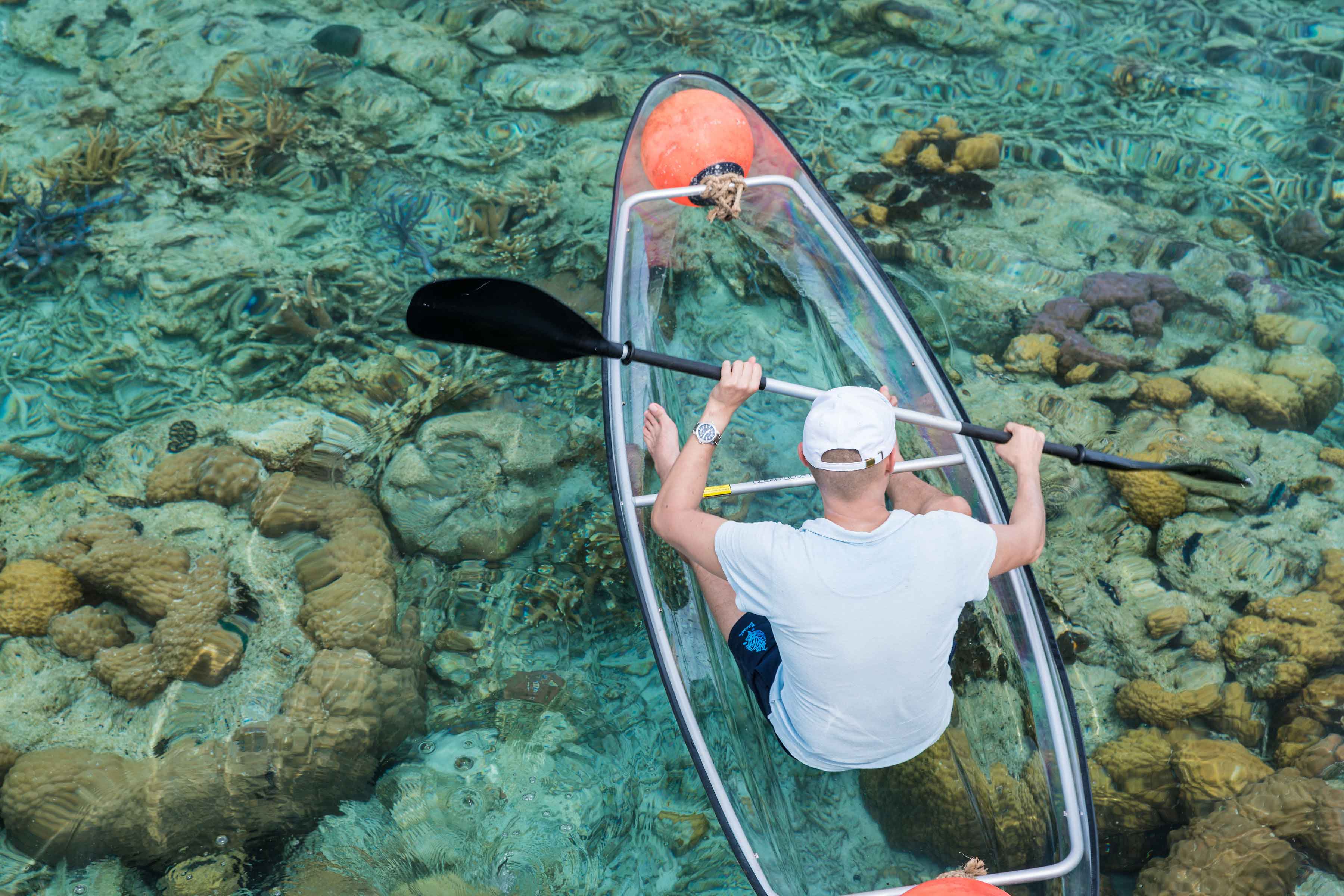
Their connection was fostered by their love for nature, nurtured from their youths spent boating, fishing and playing in forests and exploring islands. Working together on the project meant spending inordinate amounts of time traveling to Bawah by boat (planes didn’t fly there then). “There had to be a sort of energy and friendship between us to make it all happen,” says Mr. Hartnoll.
Besides diving around Bawah for the project, Mr. Hartnoll joined Mr. Sim for his first free-diving trip in Bali a few years ago. Their shared vision for the resort was fueled by their desire to recreate the magic they felt as youths discovering elements of nature, and a sense of wonder and awe that nature inspires.
- THE PROVENANCE
- SHAPING THE DREAM
- ECO-TECHNIQUES AND CHALLENGES
- SUSTAINING THE FUTURE
Shaping the Dream
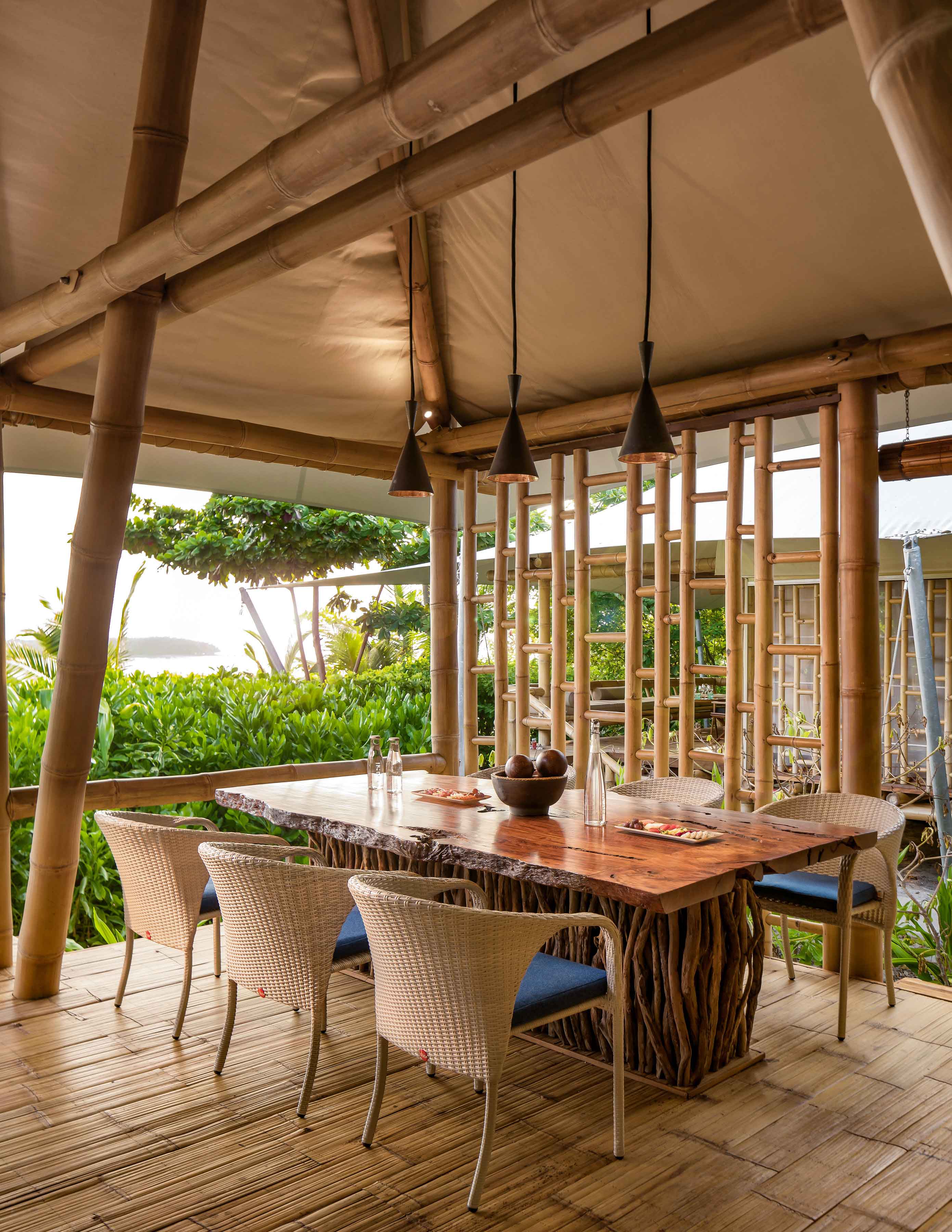
While their dream was idyllic, they soon discovered that the reality of constructing a resort of their vision was far from straightforward or conventional. Mr. Hartnoll met Mr. Sim without a brief, but they knew they wanted to preserve the pristine quality of the area and build with minimal disturbance to the ocean and terrain. It was an ambitious plan given that Mr. Hartnoll was a hospitality novice.
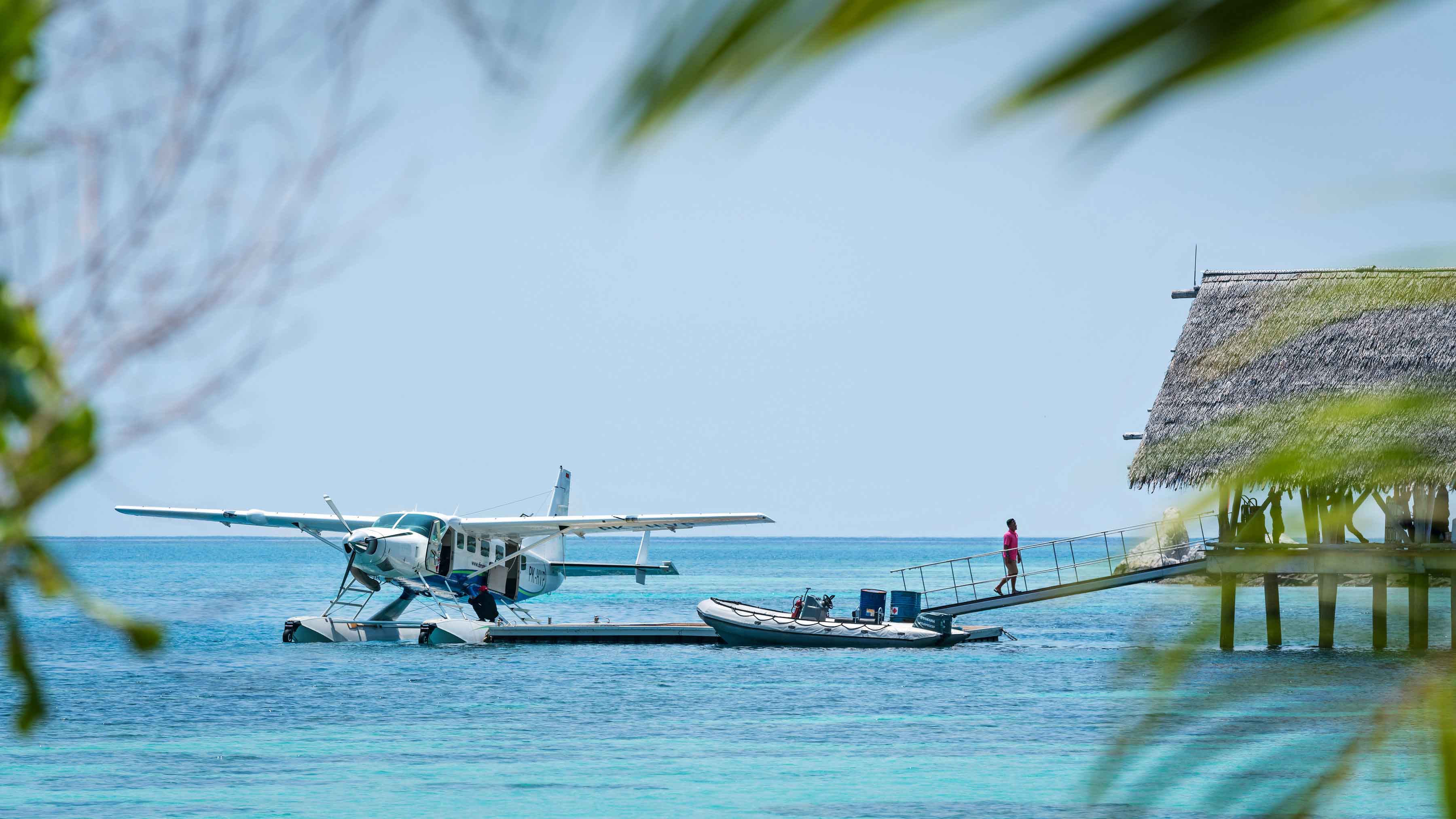
“I was a virgin in that area, to borrow from Richard Branson,” recalls Mr. Hartnoll. “Until then, my holidays were mostly going away on a boat. I’d been to very few high-end resorts then, so a super luxury resort wasn’t my first idea.”
When they started market research and did their numbers and logistics — getting from Singapore to Bawah takes about four and a half hours, via limo pickup from your doorstep to the ferry journey and then the seaplane leg — they knew the single biggest cost would be the aviation access. For guests who would be willing to shell out US$700 for the transportation, the resort had to be in the luxury category.
Fortunately, Mr. Sim is a veteran in building five-star hotels. But nothing prepared them for the arduous task of building a luxe resort with minimal impact on its surroundings.
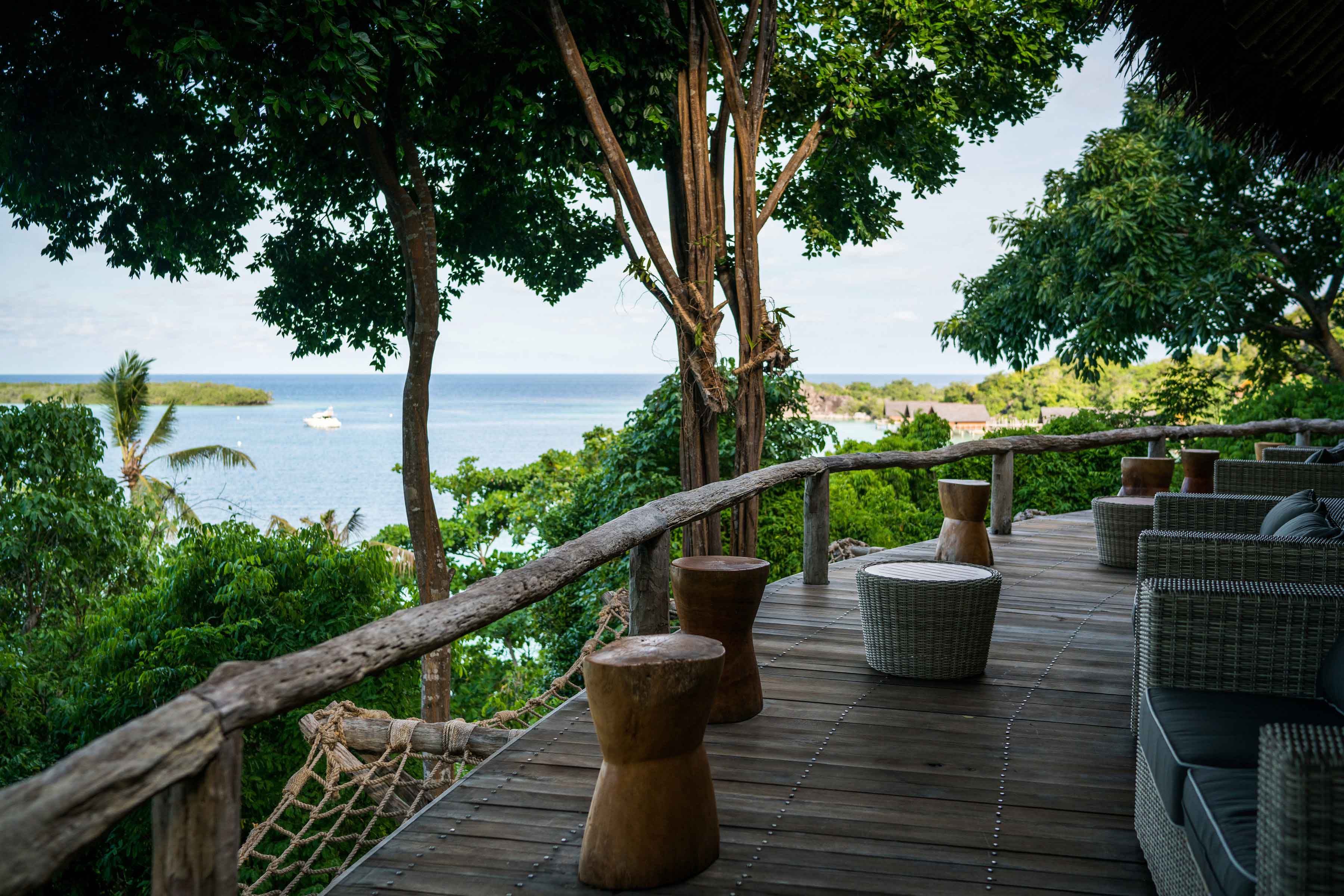
To realize that dream of an unspoiled paradise, the resort had to be built by hand. No cranes, heavy machinery or mechanized excavators were used, in order to avoid tearing up existing vegetation.
During construction, the jungles were screened off so no one could trample in. They kept to endemic plants and trees, instead of introducing alien species, because existing species were best adapted to the environment.
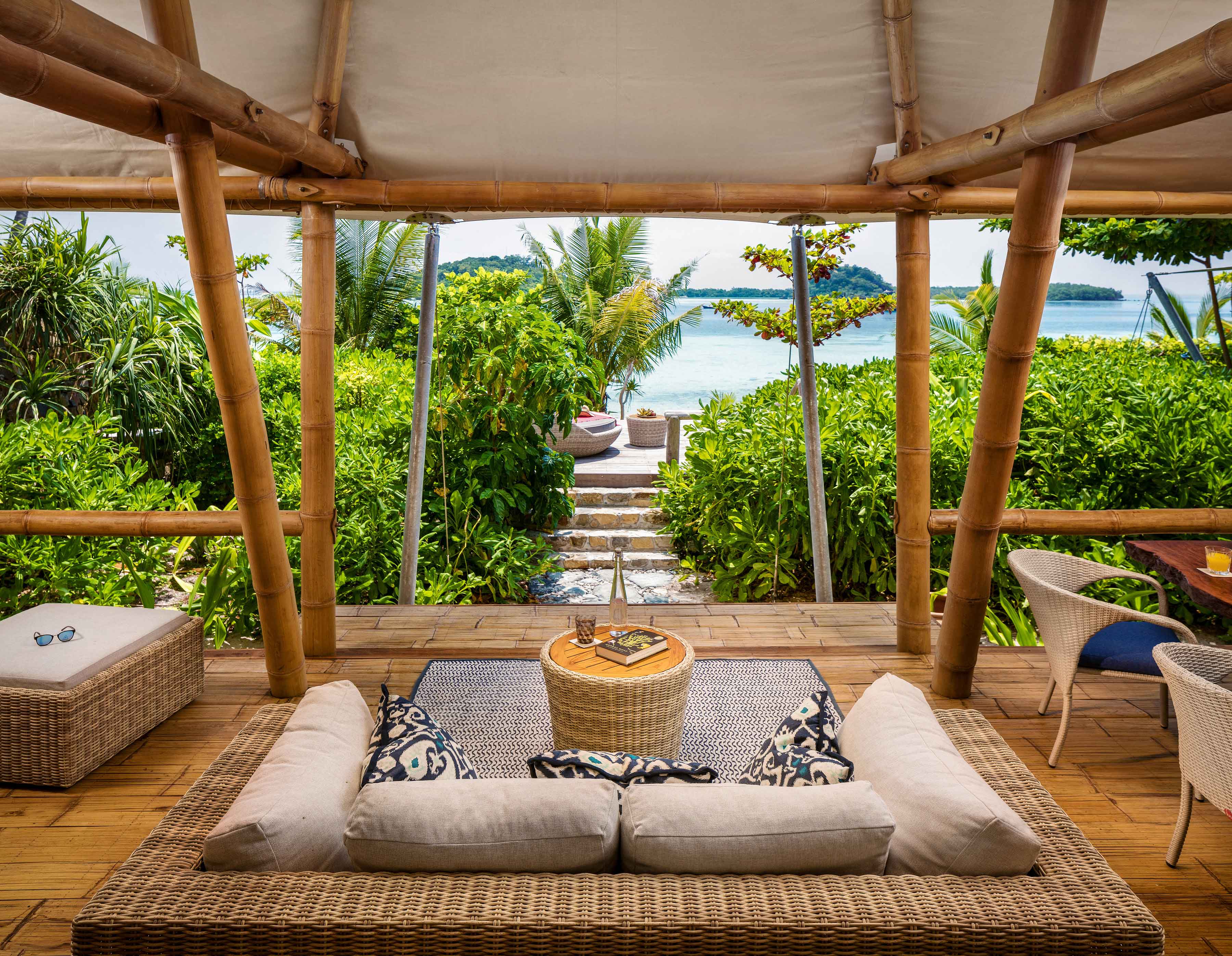
“That’s why the resort opened looking like it’s been there for many years, because the only footprints we made were just to put the buildings there. It is something that can only be achieved from building by hand,” explains Mr. Sim. “For instance, the design of all the structures in bamboo necessitated blending design with local craft skills, starting with the processing of the raw materials, to the prefabrication of parts and the erection of these novel structures. This hand-built process lends a unique texture and character to the completed architecture.”
- THE PROVENANCE
- SHAPING THE DREAM
- ECO-TECHNIQUES AND CHALLENGES
- SUSTAINING THE FUTURE
Eco-techniques and Challenges
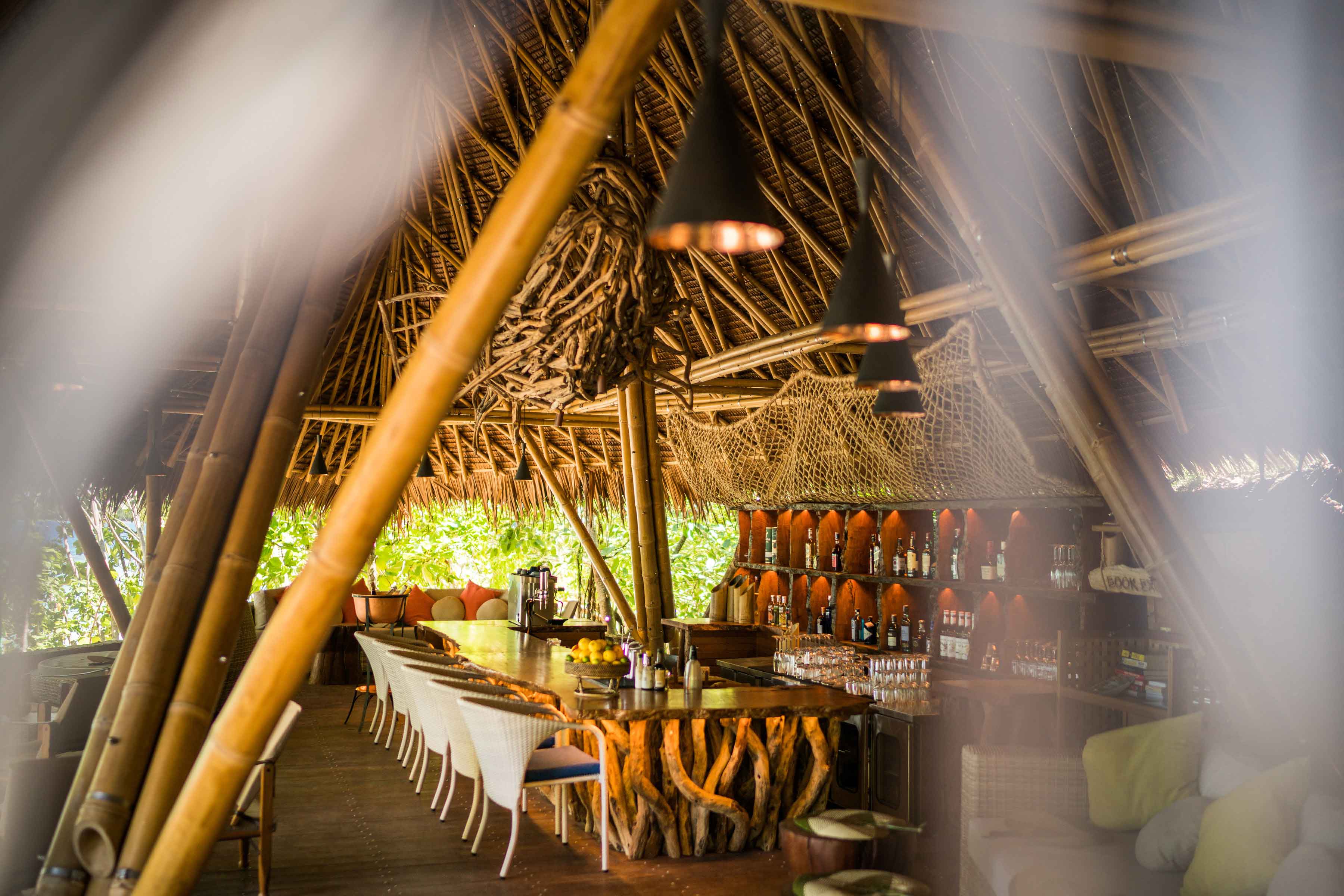
The use of bamboo as the material for the primary structure was crucial to building the project without heavy machinery. The bamboo was treated with boric acid, a naturally occurring compound, to prevent it from rotting.
Beyond the design, there are operational aspects of water recycling, waste management and low plastic waste policy, including permaculture gardens that aim to make the island at least 60 percent self-sufficient in terms of agricultural produce. Set up by Mr. Hartnoll, the Bawah Anambas Foundation implemented the initiative to get neighboring islanders to cultivate food for the resort kitchen, a move that is part of its multi-dimensional sustainability efforts.
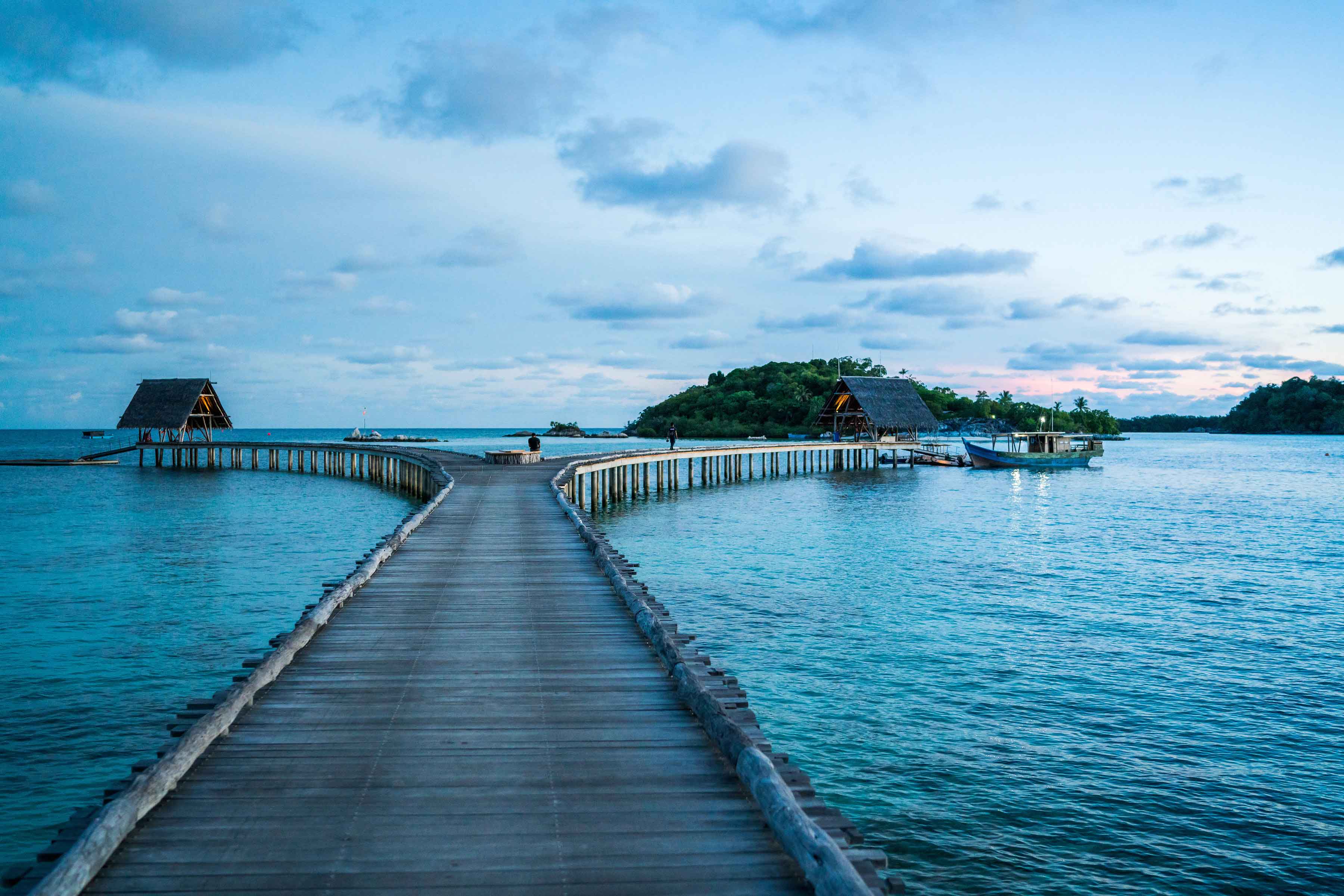
“Even something as mundane as a jetty can be an architectural delight due to our processes,” say Mr. Sim. “This started with the operational need to serve two lagoons, one for the sea plane docking and the other for supply boats. Deploying an economical Y-configuration tempered with a curve, its signature esthetic emerged naturally.”
Painstaking construction methods were required to avoid destroying the coral below. Coral heads had to be lifted for the piles and then put back in place one by one.
This delicate task was performed by a team of islanders who harvest sea cucumbers for a living, and hence known for their diving prowess. “This was done with so much care that it took us several months to finish building. Only a property owner like Tim would have the patience and stamina to do it. The jetty has become quite special to us and somewhat of an iconic feature of the resort.”
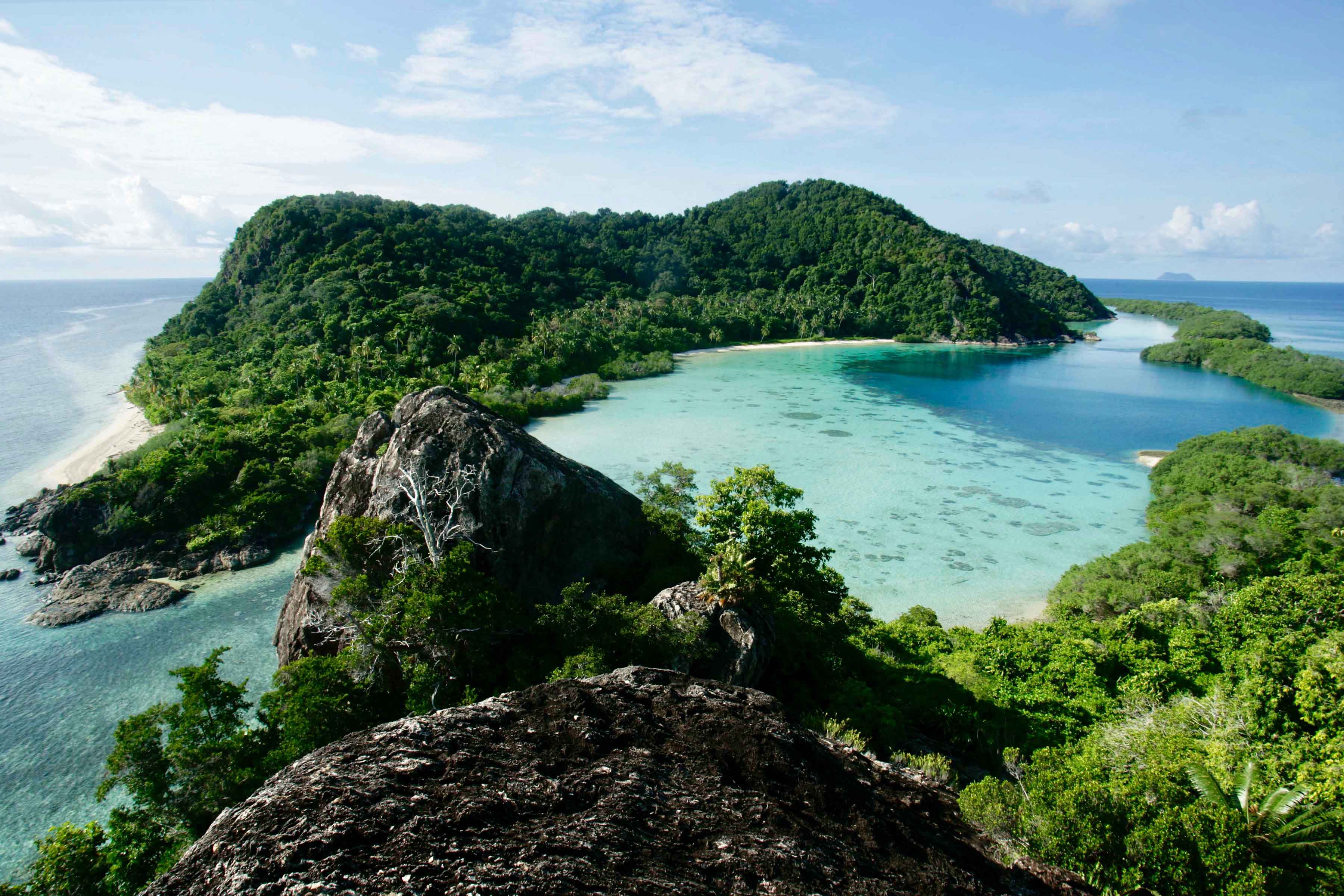
One of Mr. Hartnoll’s basic requirements was for the resort not to release water into the lagoon. “Treated water that we drink and use is rich in nutrients. If that water gets out into the ocean, it will cause imbalances and result in algae bloom, which will eventually affect the coral and so on,” he explains.
“To really preserve that pristine seawater around the island, we had to think of a range of different things. We learned all this on the job.” Water is harvested for the island and goes through reverse osmosis, then gets treated in a five-part process and biological filter for consumption.
Water is also recycled for flushing toilets and irrigation. Any water surplus gets pumped up 100m to the hill into a dispersal pipeline so that the water does not go out into the lagoon.
The daily environmental efforts at Bawah include a no-fogging policy. “Fogging tends to kills butterflies and most insects; the chemicals will also get into the lagoon and damage the coral,” says Mr. Hartnoll.
“So we found a guy who invented a solution. We provide a breeding site for mosquitoes where once they lay their eggs, the water gets cleaned out so the mosquito population is suppressed and dies off naturally. So far, it’s been very successful and I’m working with him on commercializing it.”
- THE PROVENANCE
- SHAPING THE DREAM
- ECO-TECHNIQUES AND CHALLENGES
- SUSTAINING THE FUTURE
Sustaining the Future
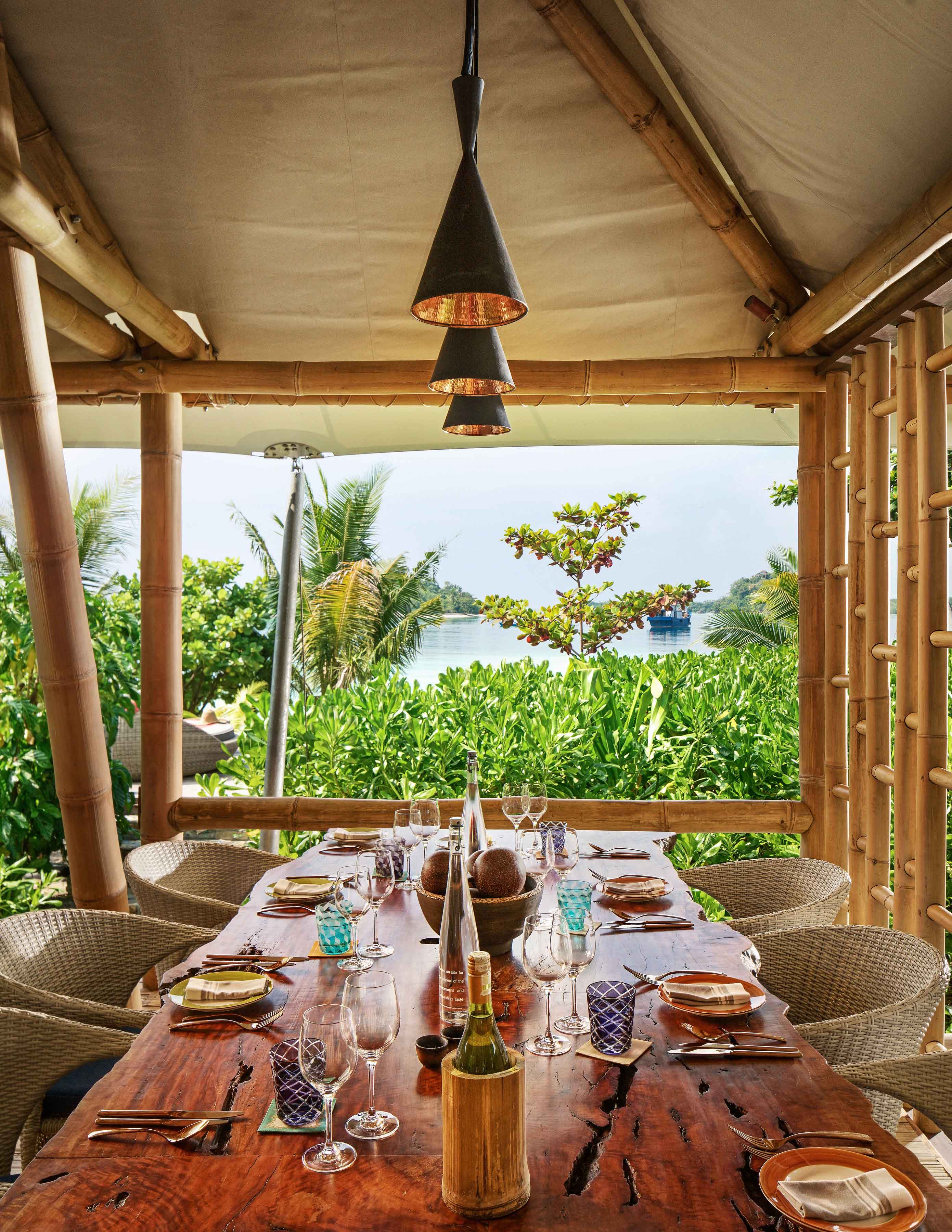
The resort’s design made consideration for climate change. “We factored in rising water levels and increased our platform heights based on projections, so the water villas and jetty are equipped to deal with that,” Mr. Sim explains.
“And the fact that we didn’t tear any vegetation would help preserve some stability in the terrain.” Such meticulous planning, construction and operation meant it took longer and cost more than initial projection.
The resort was completed in more than 5 years, costing US$30 million. On a second island, a longhouse and three bigger villas are being built for big travel groups who want even more privacy for and Mr. Hartnoll’s personal use. Four of the remaining islands are left untouched.
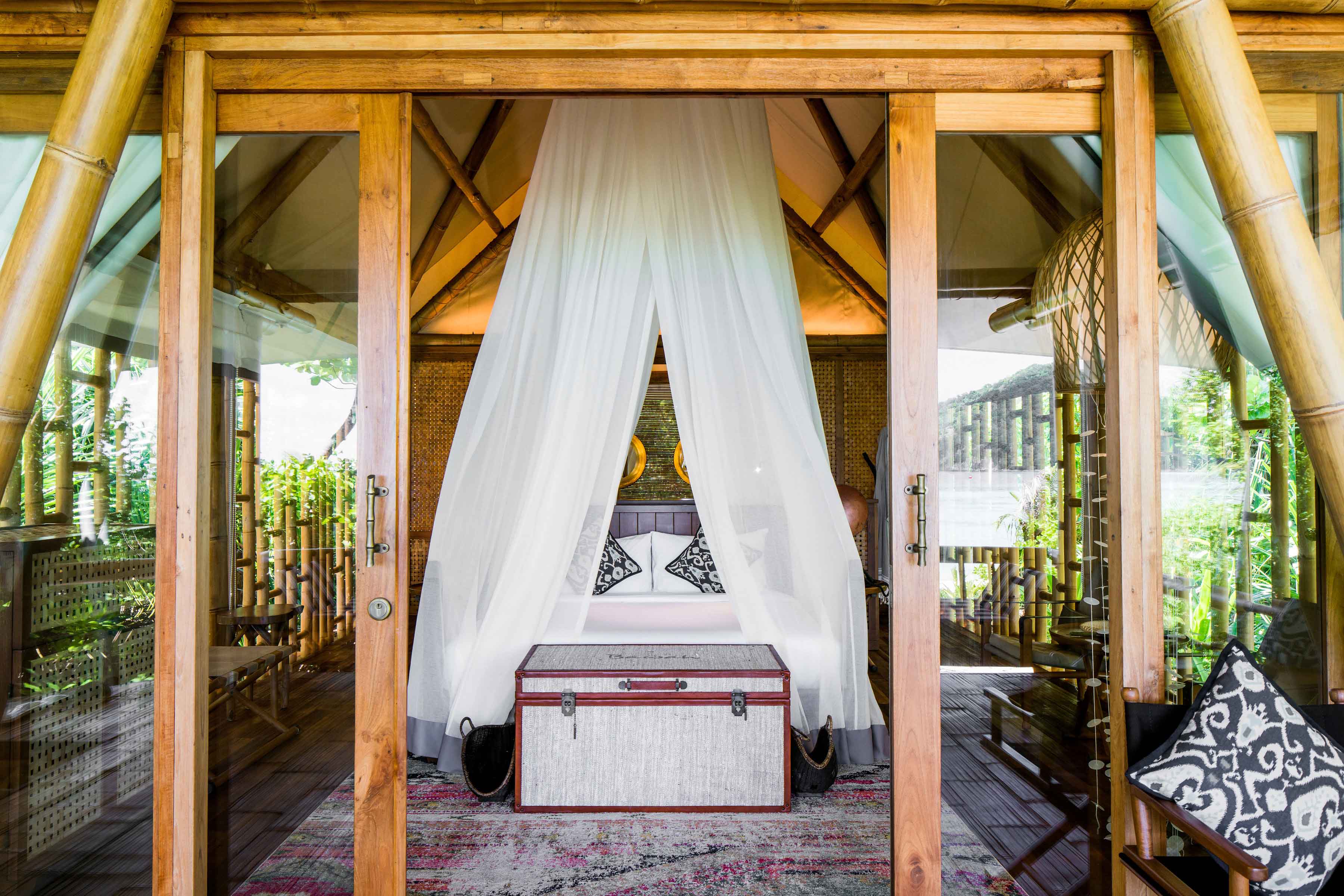
The Bawah Anambas Foundation is one of Mr. Hartnoll’s current focus in sustaining their ecological efforts and giving back to the local communities. “We have an ambition that by 2022, we will make the Anambas waters plastic-free.”
And part of that is done by introducing solid-waste management programs into the surrounding islands. To promote tourism in the area, they are also setting up a digital English learning hub in a nearby village with an NGO. Giving economic opportunities to locals by setting up farms is another initiative.
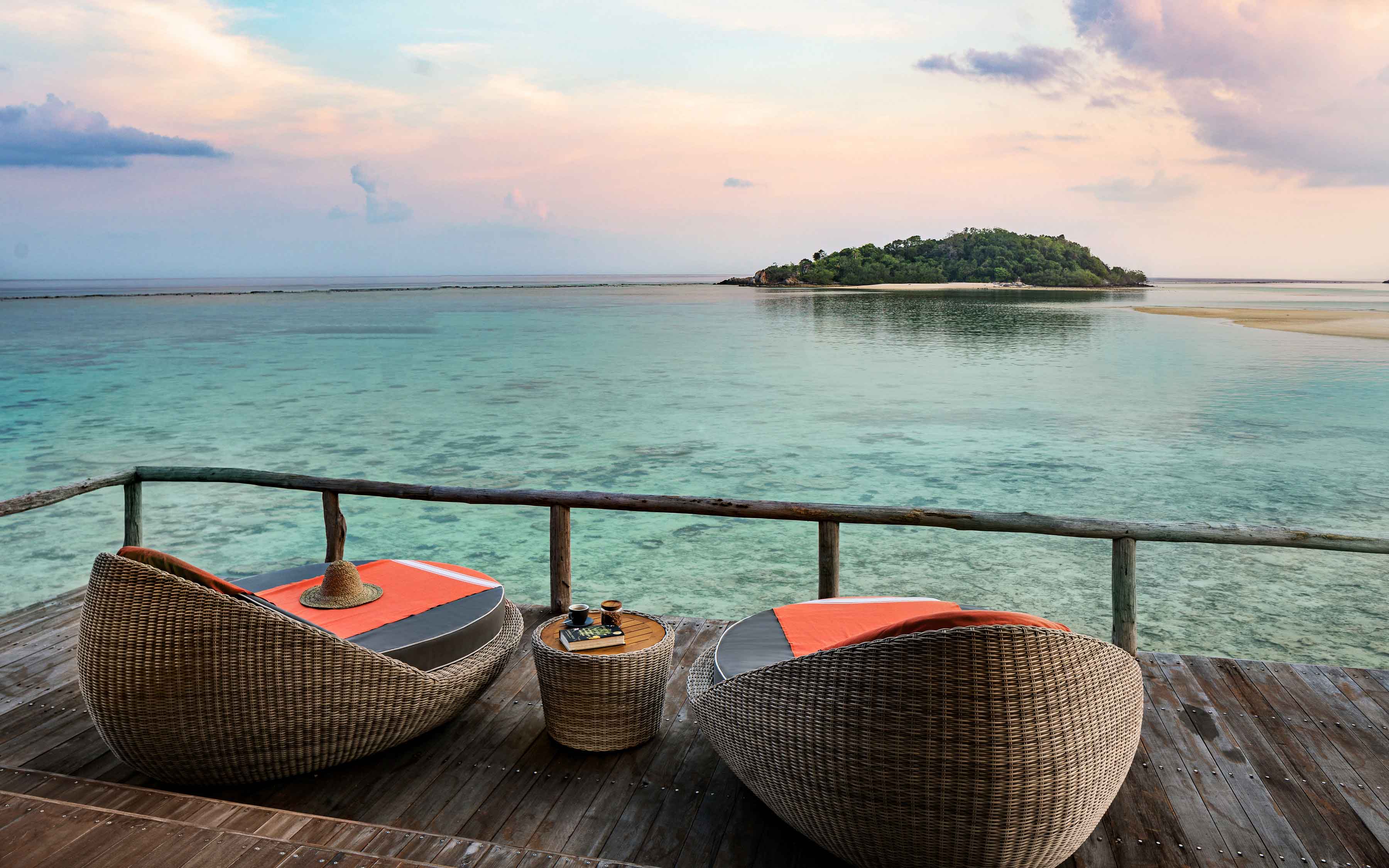
Bawah Reserve is a passion project that Mr. Hartnoll spent almost 40 hours a week building, on top of his day job. “You’ve got to be a bit crazy to do these projects. It is, by far, the most complex business I have,” he says. “There were times I wondered why I was doing it. But once we got started, I didn’t want to compromise at all.”








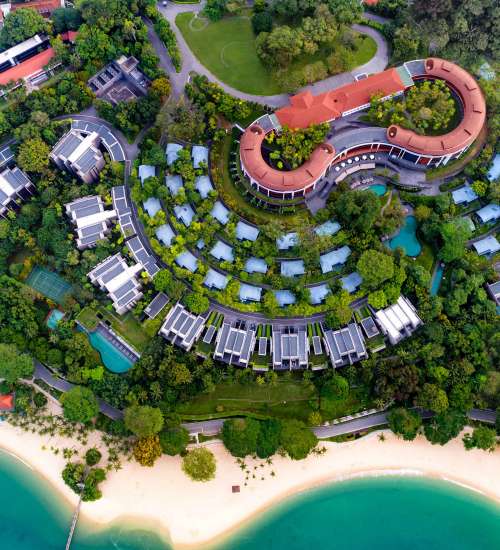
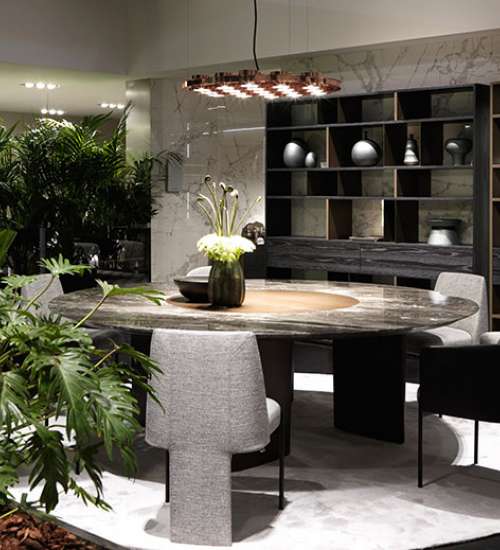
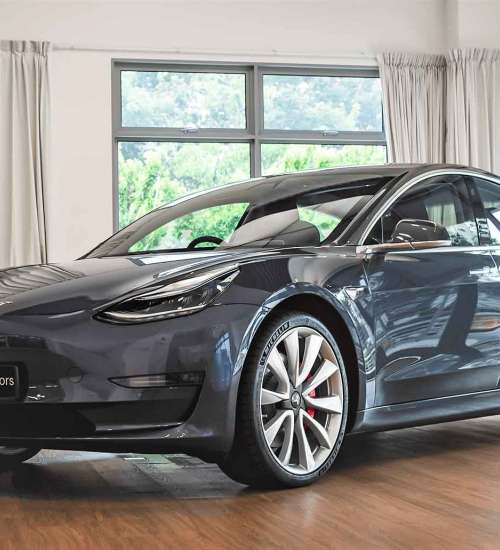
 Back
Back